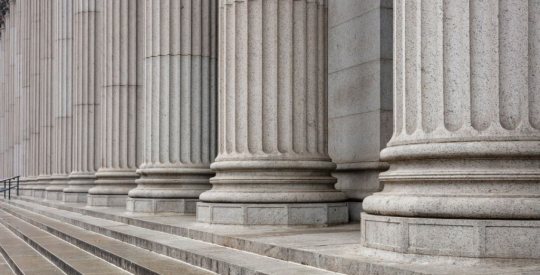The fallout from Wells Fargo’s fake accounts scandal has been rightfully significant, but if Sen. Elizabeth Warren, D-Mass., has her way, the fallout will extend to a place it’s barely touched so far – Wells Fargo’s boardroom.
Back in September, the bank was fined $150 million by the Consumer Financial Protection Bureau, the Office of the Comptroller of the Currency, and the city and county of Los Angeles for more than 5,000 of the bank’s former employees opening as many as 2 million fake accounts in order to get sales bonuses.
At the time, the bank said that those 5,000+ employees had already been let go. But since then, the bank agreed to pay at least $142 million to the affected customers, several states and cities cut off their business dealings with the bank, the bank’s CEO and a number of senior executives stepped down, and more executives were terminated by the bank.
But, in Warren’s eyes, all those responsible for the bank’s actions have not yet been held accountable.
On Monday, Warren sent a letter to the Federal Reserve Board of Governors, asking the Fed to remove all 12 of Wells Fargo’s board members who served on the board from 2011 through 2015, the time period that the fake account scandal took place.
Wells Fargo’s board has 15 members, 12 of which were on the board during when the scandal took place.
“The scandal revealed severe problems with the bank's risk management practices – problems that justify the Federal Reserve's removal of all responsible Board members,” Warren writes in the letter.
According to Warren, the results of the bank’s independent investigation show that the bank’s board displayed lax oversight during the time period in question and created an environment that allowed the fake account issue to grow.
“According to the Shearman & Sterling Report, the Board failed to create an adequate risk management framework that would have alerted it to systemic problems with retail sales practices,” Warren writes. “This failure violated Federal Reserve regulations on risk management at large banks and represented an unsafe and unsound practice.”
Warren also writes that the board’s “failure to establish adequate risk management practices and uncover these improper retail sales practices” shows that the board showed “continuing disregard” for the bank's safety and soundness.
“The Shearman & Sterling Report details the Board's refusal to seriously address improper sales practices despite years of red flags,” Warren writes. “By any measure, a bank's risk management practices cannot be adequate if they permitted more than 5,000 employees to open more than two million sham accounts in a four-year span.”
Warren writes that the board took a “hands off” approach to the management of the bank, allowing the bank’s executives to operate without proper supervision.
“As the Shearman & Sterling Report acknowledges, Wells Fargo's decentralized risk management allowed Tolstedt (Carrie Tolstedt, the former president of Wells Fargo’s community bank) to suppress crucial information and downplay the risks within the Community Bank to the Board,” Warren writes.
Warren writes that other federal regulators, i.e. the CFPB and the OCC, took action against Wells Fargo in the wake of the scandal, but notes that the Fed “has done nothing to date, despite its ample statutory authority.”
Warren urges the Fed to use the authority granted to it by Congress to remove the bank’s board members. Per Warren’s letter, the Fed is empowered to remove a bank’s board members if they “’violated any law or regulation’ or ‘engaged or participated in any unsafe or unsound practice’ that caused an insured depository institution to ‘suffer financial loss’ and that demonstrated ‘continuing disregard…for the safety or soundness’ of that institution.”
Warren concludes by drawing a comparison between Wells Fargo’s fake account scandal and the events that led to the financial crisis, suggesting that banks and their management must be held accountable for their actions.
“I urge you to exercise your legal authority to remove the holdover Wells Fargo Board members. Federal Reserve regulations and guidance impose clear risk-management obligations on the Board- obligations that are quite demanding for a bank as large and complex as Wells Fargo,” Warren writes.
“The Board did nothing to stop rampant misconduct in the Community Bank that resulted in more than 5000 bank employees creating more than two million fake accounts over four years,” Warren continues.
“The 2008 financial crisis demonstrated the danger of inadequate risk-management practices at the country's largest banks. The Federal Reserve must hold the Wells Fargo Board members accountable for their risk-management failures – both to ensure the safety and soundness of one of the country's biggest banks and to show the rest of the banking industry that poor risk management practices will not be tolerated,” Warren concludes. “The CFPB and the OCC have acted within their jurisdiction in response to the Wells Fargo scandal. It is time for the Federal Reserve to act as well.”



